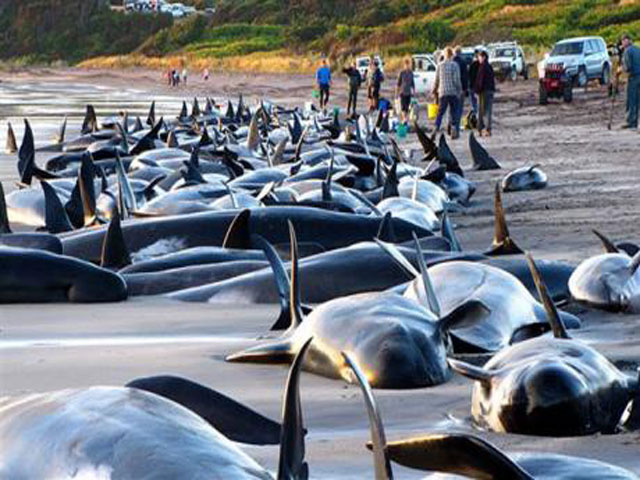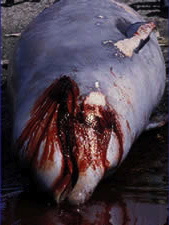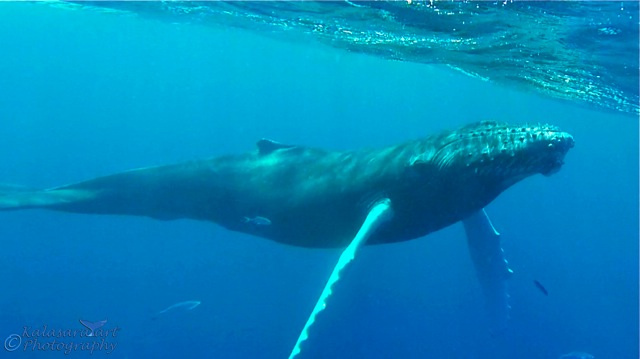Sonar
EIS:
The Navy has prepared a draft EIS to evaluate the potential environmental effects associated with military readiness training & research around the Hawaiian Island & off the coast of California. They plan to harm marine mammals approximately 10 million times over the next five years.
About Sonar:
Sonar produces “intense sound waves that sweep the ocean like a floodlight, revealing objects in their path,”. Some sonar systems emit sound waves that “can travel tens or even hundreds of miles of ocean.”
Even at 300 miles, the “sonic waves” can “retain an intensity of 140 decibels — a hundred times more intense than the level known to alter the behavior of large whales.”
Many of the whales involved in mass strandings where they beach themselves suffer “physical trauma, including bleeding around the brain, ears and other tissues” along with “large bubbles in their organs,” according to the NRDC.
“Deep-diving whales seem to be especially affected by low-frequency sounds, even at quite low received levels,” according to a 1998 study conducted by A. Frantzis at the Department of Biology’s Zoological Laboratory in Athens, Greece.

Sonar use during exercises involving U.S. Navy has been identified as a contributing cause or factor in five specific mass stranding events: Greece in 1996; the Bahamas in March 2000; Madeira Island, Portugal in 2000; the Canary Islands in 2002, and Spain in 2006 (Marine Mammal Commission 2006b). These five mass stranding events resulted in about 40 known, scientifically-verifiable sonar-related deaths among cetaceans consisting mostly of beaked whales (International Council for the Exploration of the Sea 2005a, b). It is also possible that stranding is a behavioral response to a sound under certain contextual conditions and that the subsequently observed physiological effects (e.g., overheating, decomposition, or internal hemorrhaging from being on shore) were the result of the stranding versus exposure to sonar (Cox et al. 2006).
It is also known to scare fish and injure and kill coral.

http://signon.org/sign/the-killing-of-whales?source=s.icn.em.crr_by=4737784&mailing_id=6594
http://www.leetepley.com/Site_5/Marine_mammals_and_Sonar_War_Games.html
If you see distressed marine mammals or pollution:
Call the Pacific Islands Region Marine Mammal Stranding and Entanglement Hotline at 888-256-9840 or call PMRF at 335-4111

